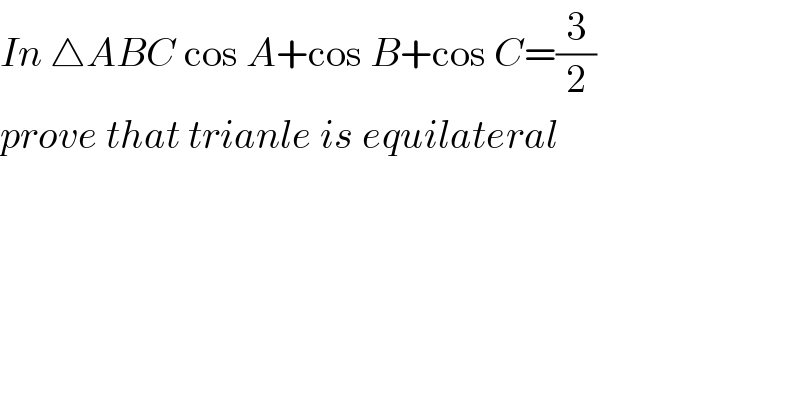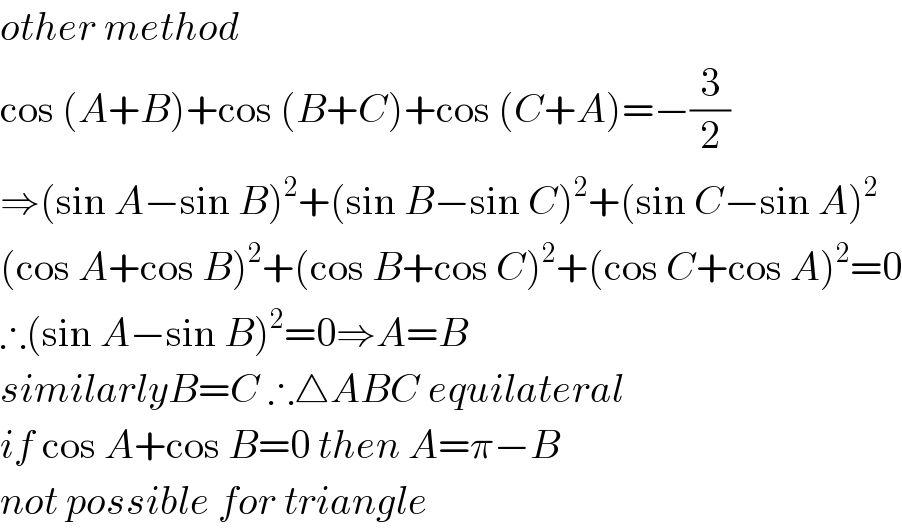
Question and Answers Forum
Question Number 54502 by math1967 last updated on 05/Feb/19

Commented by tanmay.chaudhury50@gmail.com last updated on 05/Feb/19

Commented by tanmay.chaudhury50@gmail.com last updated on 05/Feb/19
![point A,B,C lies on cosx curve point A coordinate is (A,cosA) point B coordinate (B,cosB) point C coordinate(C,cosC) △ABC centroid is G coordinate of G is(((x_1 +x_2 +x_3 )/3),((y_1 +y_2 +y_3 )/3)) so G is(((A+B+C)/3),((cosA+cosB+cosC)/3)) as per diagram point Q(((A+B+C)/3),0) point p{((A+B+C)/3),cos(((A+B+C)/3))} from diagram QP>QG cos(((A+B+C)/3))>((cosA+cosB+cosC)/3) 3cos((π/3))>cosA+cosB+cosC cosA+cosB+cosC<(3/2) now maximum value of cosA+cosB+cosC when A=B=C...so A=B=C=(π/3) so cos(π/3)+cos(π/3)+cos(π/3) =(1/2)+(1/2)+(1/2) =(3/2) that means equilateral triangle... [in other cases cosA+cosB+cosC<(3/2)]](Q54528.png)
Commented by math1967 last updated on 05/Feb/19

Commented by math1967 last updated on 05/Feb/19

Commented by tanmay.chaudhury50@gmail.com last updated on 05/Feb/19

